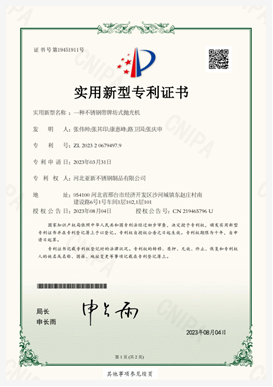rice reaper and binder
The Evolution of Rice Reaper and Binder A Historical Perspective
In the realm of agricultural machinery, few innovations have had as significant an impact on rice farming as the rice reaper and binder. Since ancient times, rice has been a staple crop for millions around the globe, particularly in Asia. The quest for efficiency in harvesting this vital grain has driven the development of various tools and machines, culminating in the sophisticated rice reapers and binders we see today. This article explores the evolution, significance, and future of these machines.
Historical Background
Traditionally, rice harvesting was a labor-intensive task carried out by hand. Farmers used sickles to cut the rice stalks and then manually bundled them for drying. This method was not only time-consuming but also physically demanding, leading to the need for better solutions. The first significant advancement came in the 19th century with the introduction of mechanical harvesters in the Western world. These machines, while initially designed for wheat, paved the way for specialization in rice harvesting.
The early 20th century saw the emergence of the first rice reapers. These machines were designed to cut the rice stalks and gather them into bundles. As agriculture modernized, the demand for more efficient harvesting methods grew, prompting further innovations. By the mid-1900s, manufacturers began developing machines that could not only cut but also bind the rice, addressing two critical aspects of harvesting in one go.
Features and Functionality
Modern rice reapers and binders are designed to maximize efficiency and minimize labor costs. These machines typically feature a cutter bar equipped with sharp blades that can swiftly mow down rice stalks. The collected stalks are then fed into a binding mechanism, which wraps them into neatly formed bundles. This two-in-one functionality not only saves time but also reduces the physical strain on farmers.
Most contemporary rice reapers are powered by engines, making them faster and more reliable than their manual counterparts. Additionally, many models are equipped with adjustable cutting heights and widths, allowing farmers to tailor their approach based on the specific conditions of their fields. The integration of technology, such as GPS and automated controls, has taken efficiency to new heights, enabling farmers to optimize their harvesting routes and timings.
rice reaper and binder

Impact on Rice Farming
The introduction of rice reapers and binders has transformed the landscape of rice farming. By significantly reducing harvesting time, these machines allow farmers to reallocate labor to other important tasks, such as planting and irrigation. As a result, overall productivity in rice farming has increased, contributing to food security in rice-dependent nations.
Moreover, the use of mechanical harvesters has enabled larger-scale rice production. Farmers can now manage larger fields effectively, thus improving their income potential and establishing more sustainable farming practices. In countries like Vietnam, Thailand, and India, the mechanization of rice harvesting has been a key driver in enhancing agricultural output and rural livelihoods.
Future Prospects
Looking ahead, the future of rice reapers and binders appears promising, especially with the rapid advancement of technology. Innovations such as artificial intelligence and machine learning could lead to smarter harvesters that can adapt to different farming conditions in real-time. Moreover, with global concerns about climate change, developing eco-friendly machinery that minimizes environmental impact will be crucial for sustainable farming.
Another area of potential growth is the accessibility of these machines to smallholder farmers. While large-scale operations have reaped the benefits of mechanization, smaller farms often struggle with affordability and access. Innovative financing solutions and government support could facilitate the spread of rice reapers and binders, helping even the smallest farmers improve their efficiency.
Conclusion
The rice reaper and binder are quintessential examples of how technology can revolutionize agriculture. By automating the harvesting process, these machines have not only eased the burden on farmers but have also contributed significantly to global food security. As we look to the future, continued innovation in this field promises to make rice farming even more efficient, sustainable, and accessible, ensuring that this vital crop remains a cornerstone of diets worldwide. The journey of the rice reaper and binder is a testament to human ingenuity and our commitment to enhancing agricultural practices for generations to come.
Latest news
-
When to Upgrade Your Old Forage HarvesterNewsJun.05,2025
-
One Forage Harvester for All Your NeedsNewsJun.05,2025
-
Mastering the Grass Reaper MachineNewsJun.05,2025
-
How Small Farms Make Full Use of Wheat ReaperNewsJun.05,2025
-
Harvesting Wheat the Easy Way: Use a Mini Tractor ReaperNewsJun.05,2025
-
Growing Demand for the Mini Tractor Reaper in AsiaNewsJun.05,2025







